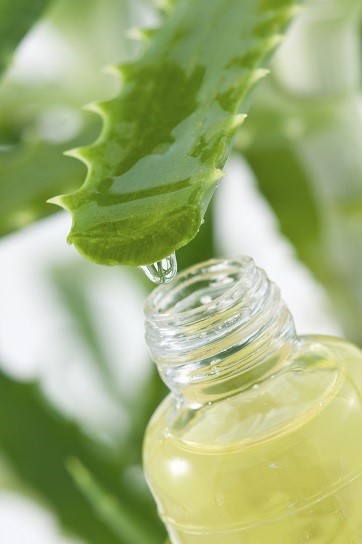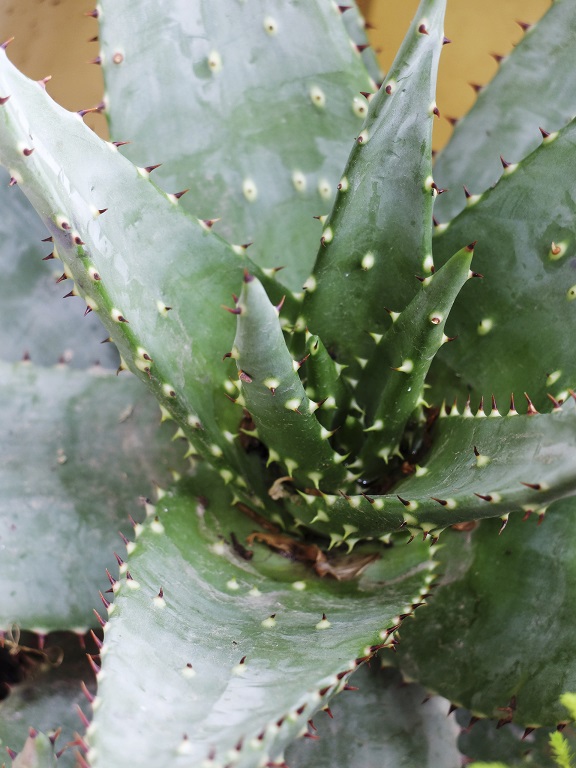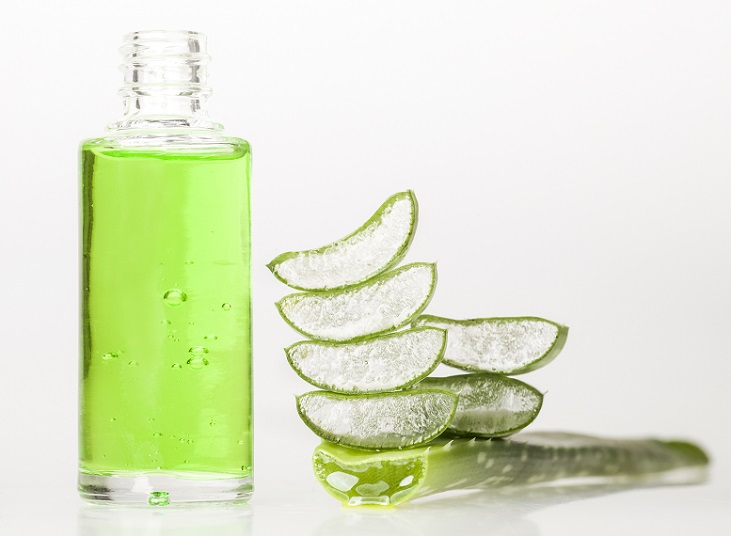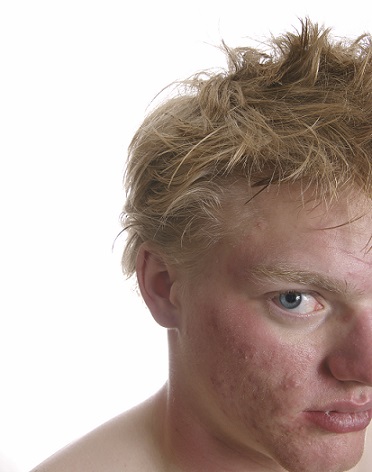 Aloe vera (Aloe vera barbadensis) is easily one of the most amazing medicinal plants mankind has yet discovered. There’s over 400 aloe species of which just four, including aloe vera, are cultivated for medicinal purposes.
Aloe vera (Aloe vera barbadensis) is easily one of the most amazing medicinal plants mankind has yet discovered. There’s over 400 aloe species of which just four, including aloe vera, are cultivated for medicinal purposes.
Its history among humanity dates back at least 6000 years, which is proven by Ancient Egyptian stone carvings. Egyptians referred to the leaves’ gel-like substance as “the blood” and both Cleopatra and Nefertiti used aloe vera in their daily beauty regimen.
In fact, the Egyptians even embalmed newly dead mummies with aloe vera gel, to prevent decomposition and grant eternal life. The Papyrus Eber, a 1550BC medical text, contains detailed descriptions of aloe vera’s anti-inflammatory effects.
Fast forward 2000 years to Ancient Greece, and for Alexander the Great, aloe vera was so sacred that he regularly brought along his own supply to treat wounded soldiers. He even conquered the entire land of Socrata in an obsessive attempt to control the plantations. During his later schemes to invade India, Alexander based his army in Socrota to ensure a fresh supply.
Aloe vera has given birth to skin-enriching legends in every culture it has ever come into contact with…
…and today, scientific experiments are finally supporting what our ancient ancestors knew from experience. Back in 2014, a study was released showing that simple aloe vera gel can dissolve your pimples.
50% aloe vera gel slashes acne
Scientists led by Dr Z Hajheydari gathered 60 acne-ridden volunteers and divided them into two test groups of 30. Group 1 received a topical retinoid cream (0.05% tretinoin), while group 2 received the same cream, but featuring 50% aloe vera gel.
After 8 weeks, the results offered the clearest proof you could possibly hope for.
The tretinoin was decent, but the combined tretinoin/aloe vera gel reduced inflammatory acne lesions, non-inflammatory acne-lesions, and total acne lesions much more effectively.
Better, the combination cream group endured far fewer side effects. One of the 75 medicinal compounds in aloe vera was clearly acting as damage control. The scientists concluded that “TR/AVG was well tolerated and significantly more effective than TR and vehicle for… mild to moderate acne vulgaris”.
Read Annihilate Your Acne – get the ultimate diet for clear and glowing skin!
How does aloe vera, a common succulent (it’s not a cactus) found in Africa, Asia and the Middle East, achieve this magic? Easily, because of all the natural topical treatments, few can match aloe vera’s staggering 75 recognised bioactive compounds. First, there are traces of the standard vitamins and minerals like zinc, vitamin C and vitamin E. Then there’s anti-inflammatory saponins, antioxidant proteins like metallothionein, traces of almost every amino acid needed for human survival.
Aloe vera contains twelve members of a strong phenolic antioxidant family called anthraquinones, including aloin and emodin. Several compounds are especially well researched, including glucomannan, a polysaccharide (sugar), and gibberellin, a plant based growth hormone.
Your acne will have a hard time recovering if aloe vera so much as brushes against your face. But what are the specific pathways involved?
Aloe vera has countless anti-inflammatory compounds
 As every teenager should know, chronic inflammation is the root cause of acne vulgaris.
As every teenager should know, chronic inflammation is the root cause of acne vulgaris.
While diet is most important (e.g. lowering sugar), topical treatments like rose water are great for targeting the skin’s surface directly. Some, like resveratrol, succeed using a single unstoppable anti-inflammatory compound, while aloe vera joins raw honey in combining dozens of smaller enzymes.
Firstly, aloe vera is rich in the enzyme bradykinase which degrades bradykinin, an important inflammatory mediator. This study confirmed that the bradykinin in aloe vera acts in the same way: “aloe barbadensis gel contains a material that inhibits the bradykinin effect, which might explain the anti-inflammatory properties”.
Secondly, there’s the compound C-glucosyl chromone, which according to this study on an inflamed mouse ear, has equally strong topical anti-inflammatory activity to pharmaceutical hydrocortisone (catabolic steroids). Aloe vera contains plenty, as it was the first plant from which the compound was isolated in 1996.
Then there’s the class of phenolic antioxidants called anthraquinones. The most notable is aloin, a bitter yellow coloured compound found in at least 68 of the aloe species. Aloin was long used as a laxative before the FDA ruled it as unsafe in 2002. However, it’s been born again as an inflammation slasher, inhibiting COX-2 (study), the public enemy number 1 of inflammation which stimulates numerous smaller immune system cytokines.
Raw honey – a natural secret for wiping out acne bacteria
The same study also showed that another aloe vera anthroquinone called aloe-emodin could reduce COX-2. Its anti-inflammatory powers equalled kaempferol and quercetin, a powerful antioxidant from red onions.
Gibberellin, a plant hormone that upregulates collagen output, can decrease inflammation in diabetic mice with poor wound healing (study). The study concluded that gibberellin was a chief anti-inflammatory component of aloe vera. This study was more mixed, observing increased activity of pro-inflammatory mast cells.
But what really makes gibberellin interesting is its ability to inhibit substance P, one of the least famous villains behind acne, a nameless compound with a tight link to sebum production. Gibberellin could lower substance P in both prolonged and single doses, while the glucomannan in aloe vera may also lower substance P.
Aloe vera gel contains lupeol
 Next we have what I believe to be aloe vera’s ultimate anti-inflammatory phytonutrient – lupeol.
Next we have what I believe to be aloe vera’s ultimate anti-inflammatory phytonutrient – lupeol.
Lupeol is a triterpenoid fatty acid found in aloe vera gel, and also mango and dandelion coffee. There’s so many studies that reading them all would make your brain explode. This, this, this, this, this, and this study found that lupeol lowered inflammation, whether from aloe vera itself or other medicinal plants.
The most clear-cut reduced the swelling of an inflamed rat paw by 39%, massacring the pharmaceutical NSAID indomethacin, at just a 35% reduction.
Another study compared lupeol to the anti-inflammatory compound alpha-Mangostin found in the mangosteen fruit. Mangosteen has been hyped up as a superfood for years now, but the 38.70% reduction of skin inflammation fell well short of lupeol’s 57.14%.
Lupeol in aloe vera reduces inflammation in rat skin, human skin, mouse skin – probably even alien skin if we could track them down (check out this massive scientific review).
Stepping up to the plate last is the polysaccharide glucomannan. This uncommon plant-based sugar, traditionally extracted from the elephant yam (konjac), has flooded into the supplement market during the last ten years as a natural weight loss pill.
However, what we like is this study on mice with the inflammatory skin conditions eczema and atopic dermatitis, who were fed glucomannan for 8-9 weeks daily. There was a big reduction in inflammatory chemicals such as interleukin-4 and TNF-alpha, and that was only orally. By applying the glucomannan topically, the anti-inflammatory properties should become hyper concentrated.
What about aloe vera itself?
There’s one last hurdle – what about the whole aloe vera gel or extract? Could a random irritating plant chemical outweigh all the anti-inflammatory compounds, scuppering its ability to clear acne?
For most people, the answer is a resounding no, because direct studies have been just as conclusive:
ONE: this 2003 study concluded that aloe vera extract had significant inhibitory activity against p.acnes-induced skin inflammation. Pro-inflammatory, pro-acne chemicals such as interleukin-8 and TNF-a fell off a cliff.
TWO: scientists reached an exciting conclusion in this old 1989 study: “small amounts of A. vera given topically will inhibit inflammation induced by a moderate amount of irritant”. Aloe vera lowered skin inflammation by a gigantic 47.1%.
THREE: this 1996 study was particularly interesting, applying aloe vera to inflamed rat paws and observing a reduction in inflammatory chemicals called neutrophils. Neutrophil overload is a nightmare for acne, because their main, ordinarily healthy job is to unleash free radicals to break down damaged cells. For us acne patients, the conclusion could not be more promising: “the extracts of aloe vera gel have anti-inflammatory activity”.
Aloe vera is the name that angry pimples dare not speak. Few plants can beat the sheer number of anti-inflammatory compounds the gel contains.
Elsewhere there’s one study which is almost rock solid proof. It tested psoriasis, a skin condition that causes red, crusty, flaky patches of skin, and is common between ages 15 and 35.
Scientists assembled 60 patients aged 18 to 50 (mean age 25.6), all with moderate to slight psoriasis. The patients applied either a placebo or 0.5% concentration aloe vera three times daily for five consecutive days per week.
By the end of the experiment, the psoriasis cream had cured 25 out 30 patients (83.33% success rate), while the placebo could muster only 2/30 (6.66%). Furthermore, there were no side effects whatsoever. The study was conducted superbly, double-blind and placebo controlled. The mean duration of the disease beforehand was 8.5 years, so they weren’t just “casual” psoriasis sufferers.
Any side effects for acne?
 Aloe vera’s only major downside seems to be a slightly higher rate of allergic reactions than others. I gleamed that fact from extensive trawling through the depths of the internet. Such reactions include…
Aloe vera’s only major downside seems to be a slightly higher rate of allergic reactions than others. I gleamed that fact from extensive trawling through the depths of the internet. Such reactions include…
-A rash of eczema popping up despite an improvement in acne.
-Tiny red bumps all over the face.
-Red rashes springing up despite an improvement in acne.
Elsewhere there’s this case study, documenting a 72 year old woman who had taken to bathing her legs with homemade aloe vera juice in search of pain relief. Scientists had observed patches of dermatitis (an inflammatory skin disorder) on her legs. Tests of the patches showed positive reactions to both the leaf and macerated jelly of aloe vera. This study and this study observed occasional redness, irritation, and contact dermatitis.
It’s not surprising, as with an endless array of compounds comes a higher chance of a reaction to one. However, the first study did comment that “reports of allergic reactions are rare”, and they certainly are; only moderately more common than other topical acne treatments. Many of the wound healing studies above specifically praised aloe vera’s lack of side effects.
The solution for acne then? Apply a patch of aloe vera to your arm before your face, to establish whether you have a sensitivity or not.
Another common fear is that aloe vera increases sensitivity to sunlight, and hence acne due to the free radicals caused by ultraviolet light.
One study supports this theory, claiming that aloe vera leads to phototoxicity, but another study found the exact opposite. Apparently, applying aloe vera gel to human skin generates an antioxidant protein called metallothionein, which both scavenges free radicals and prevents antioxidants like glutathione and superoxide dismutase from being suppressed. Consequently, inflammation plummeted in UV-irradiated areas of the skin.
This study however, found preventative benefits for neither sunburn, suntan, nor sunlight-induced radiation injuries. The jury is out on whether aloe vera alters your skin’s sensitivity to sunlight.
Aloe vera’s final advantage is a minimal comedogenic score of 0/5, according to the American Academy of Dermatology. 5/5 means a “high chance of clogging pores”, while 0 means “will not clog pores”, so aloe vera is totally harmless. Unlike coconut oil, which receives a 5/5 (great as a food though).
One important note: do not consume aloe vera! Doing so could lead to nausea, digestive havoc, and even liver problems! There’s no point anyway. For acne, it’s strictly a topical treatment.
Which is the best aloe vera brand?
If you want the greatest amounts of nutrients and compounds possible, then you’ll have to trek to the arid deserts of Africa or Asia with a machete to hack the leaves off the plant personally.
Aloe vera is best when fresh, as this study found that pasteurisation reduced the vitamin C content and antioxidant activity by 16% and 57% respectively. The glucomannan content plunged by over 30% as well.
The problem is that most products sold today are heated and processed too harshly. The developers don’t seem to care about the effectiveness; they simply want an excuse to slap aloe vera on the label. Hence, the beneficial gibberellin, glucomannan, and antioxidants are warped, or shattered entirely…
…but there’s one product where that age-old rule doesn’t apply: Seven Minerals Aloe Vera Gel (amazon link).
The makers of this product have taken special care to process the aloe gel gently, preserving the special compounds. The gel is entirely free from harsh chemicals found in cheap products such as sodium hydroxymethylglycinate.
There’s no thickeners, and the preservatives are entirely natural ones like citric acid or even seaweed extract, an ingredient I’ve never stumbled across anywhere else before.
Short of trekking to the plant’s homeland and getting lost in a scorching desert, Seven Minerals is the best aloe vera brand bar none.
Conclusion
Aloe vera packs such a powerful punch against acne that your pimples will be crawling to the edge of the ring within 5 seconds.
What’s more, it has a clear place in the pantheon of acne topical treatments. Grapeseed oil prevents clogged pores by supplying vitamin E. Raw honey is perhaps the ultimate topical treatment for acne, but its magic is mostly antibacterial compounds like Methylgyloxal, peptides like bee-defensin 1, and other enzymes.
Aloe vera, meanwhile, is an amazing treatment for lowering inflammation, with endless compounds combining into one soothing blob.
The hype is real – aloe vera comes at your pimples from 10 directions at once.
NEXT: learn the root causes of acne, clear your skin permanently
Thanks for reading!

Hey Richard,
Love the website! I’ve learned a ton from your articles. I see in this article you recommend Aubrey Organics Pure Aloe Vera, and was wondering if you would also recommend this Aloe Vera as well –
https://www.amazon.com/Aloe-Vera-GEL-Organic-MONEY-BACK/dp/B00XTTFI6K/ref=cm_cr_arp_d_product_top?ie=UTF8
It has great reviews and is a bit cheaper per ounce than the Aubrey Organics Aloe Vera, but I’m not sure if any of the ingredients are harmful.
Thanks!
That product looks great, it’s free from the nastiest additives and 99% organic, yet still cheap. The only risk is the potassium sorbate preservative, which is a skin and eye irritant in it’s pure form. However, in lower levels it will be safer. Maybe you should try it and experiment. It’s superior to most products, that’s for certain.
Thank you so much for the great article! Yes, aloe vera is highly beneficial to the skin, as it has anti-inflammatory, antifungal, antiviral and antibacterial properties. It also contains within it cellular regenerating properties that are capable of not only regeneration of the skin. Just started using aloe Vera on my face and chest acne. Worked wonders for me. Thanks for this.
We know that aloe vera is great , but if i hack aloe vera’s gel from natural by a knife, then how long can i store it ?
Could the potassium sorbate kill off good bacteria on the skin? Thanks!
It is a worry, but if you look at this study which tested yogurt, potassium sorbate made little different to the beneficial bacteria and mostly killed moulds and yeasts. I wouldn’t rule out dangers though.
To anyone seeing the comment above, I’ve now written an article on potassium sorbate. Summary: not the devil itself, but dodgy enough to be cautious. Which means that aloe vera is now in trouble.
https://supernaturalacnetreatment.com/potassium-sorbate-a-safe-ingredient-for-acne-or-is-it/
this is great advice, for even better results use a skincare grade aloe vera like the 10X-D. It has smaller molecules than aloe vera gel so it is able to penetrate the skin.
Do you overestimate it? According to anatomy, 99% is water, it’s pretty poor
It doesn’t mean anything, the remaining 1% is more than enough to be loaded with extremely powerful phytonutrients and sterols.
This 1% phytonutrients and sterols are very fragile and easily disappear after being removed from the leaves, no matter how they are stored, is it important?